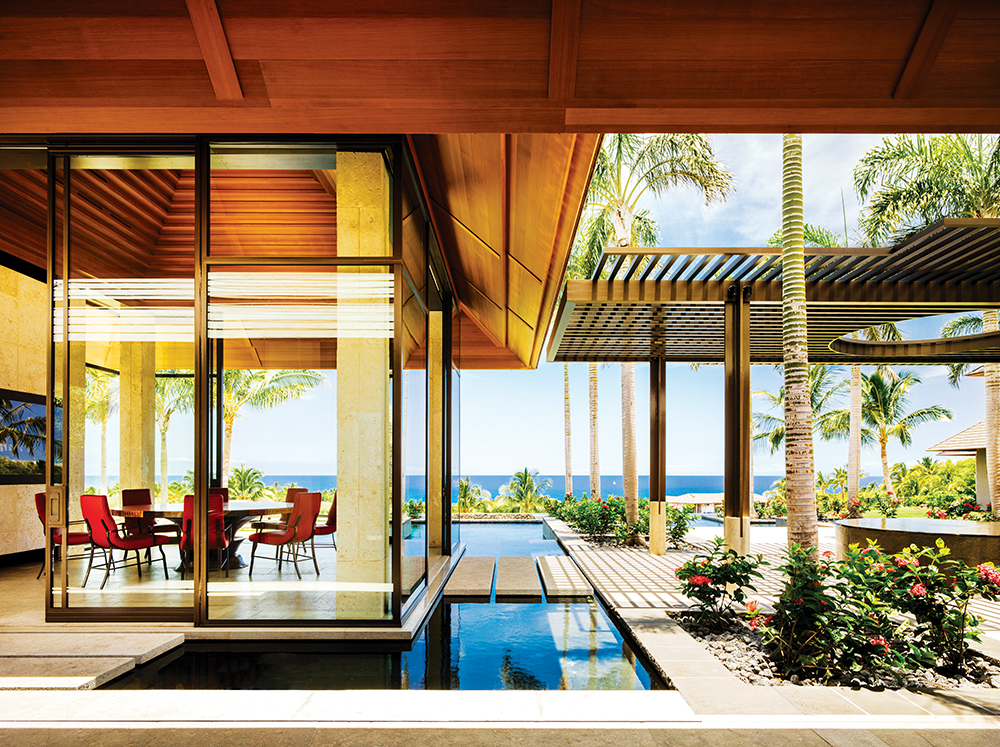What’s in store for luxury coastal lifestyles in 2017? Expect ocean homes to be beautiful, efficient spaces that draw people to their outdoor settings, with lush landscaping and distinct spaces for active sports and leisurely relaxation in the sun.
More than ever, exceptional waterfront residences will be designed for energetic days with family and friends, and evenings enjoyed in classic interiors decorated in soft neutral shades or outside around a fire pit.
Leading architects, interior designers and landscape specialists predict 2017 will be the year of more casual and multigenerational entertaining and a much closer physical connection with nature.
Smarter home design, especially in regard to rising seas and powerful storms, is another important trend, along with advances in sustainability and green technology. Our experts chart new design possibilities to usher in a stylish, safe and home-centric year.
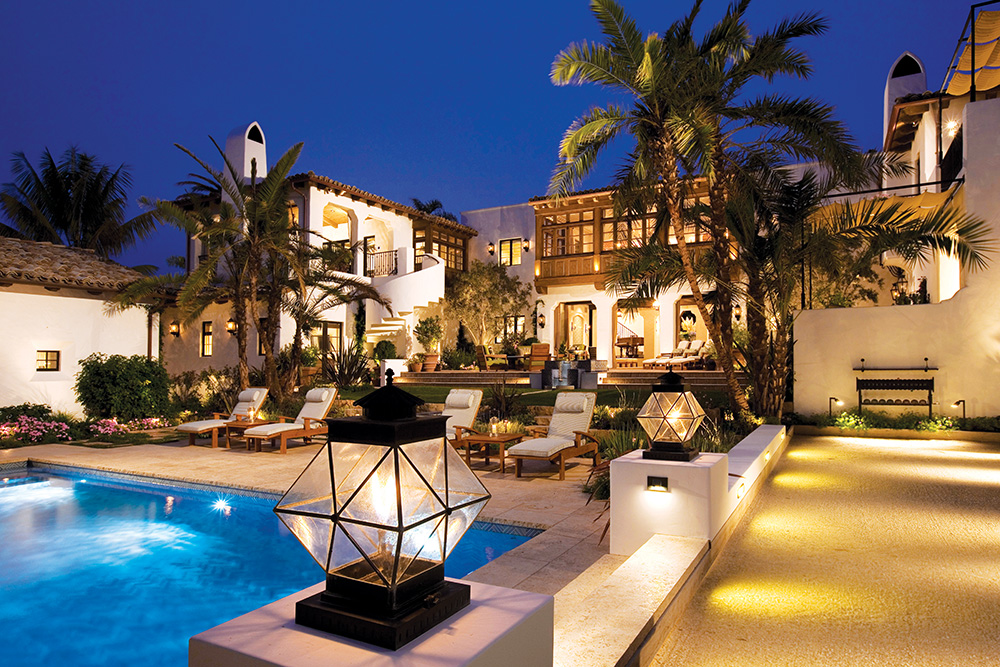

Photo by Manolo Langis
?Leading architect Erik Evans of KAA Design creats a stunning Spanish Revival home in Manhattan Beach that embraces the location’s breezy coastal lifestyle.
BRINGING HOME THE BEACH
“Our coastal clients are more interested than ever in immersing themselves fully in the active beach lifestyle,” says Erik Evens, partner at Evens Architects, a KAA Design Company based in Los Angeles.
This means coastal homes that embrace water sports and activities in a way that’s carefully designed and seamless, he adds.
Think storage “garages” for surfboards, wetsuits and beach gear; outdoor showers; compact plunge pools; and comfortably furnished porches and verandas, which mediate between the indoors and the sand dunes.
“All of these features help to fine-tune a home’s architecture to a contemporary coastal sensibility,” Evens says. evensarc.com
.jpeg)
.jpeg)
Courtesy of [STRANG] Architecture
Max Strang
ELEVATED LIVING
For Miami-based Max Strang, principal of [STRANG] Architecture, 2017 is the year for resiliency in coastal home design and construction.
“We strongly encourage our clients to raise their homes well above the minimum required standards,” he says, even though many local zoning regulations penalize homeowners for doing so.
With seas rising and hurricanes undoubtedly packing larger and more dangerous storm surges, Strang says action needs to be taken.
“Homeowners should be incentivized to build smarter,” he says. “As professional architects, it’s imperative that we constructively guide our clients through the difficult decisions. This often results in a complete reassessment of how a coastal home should function.” strang.design
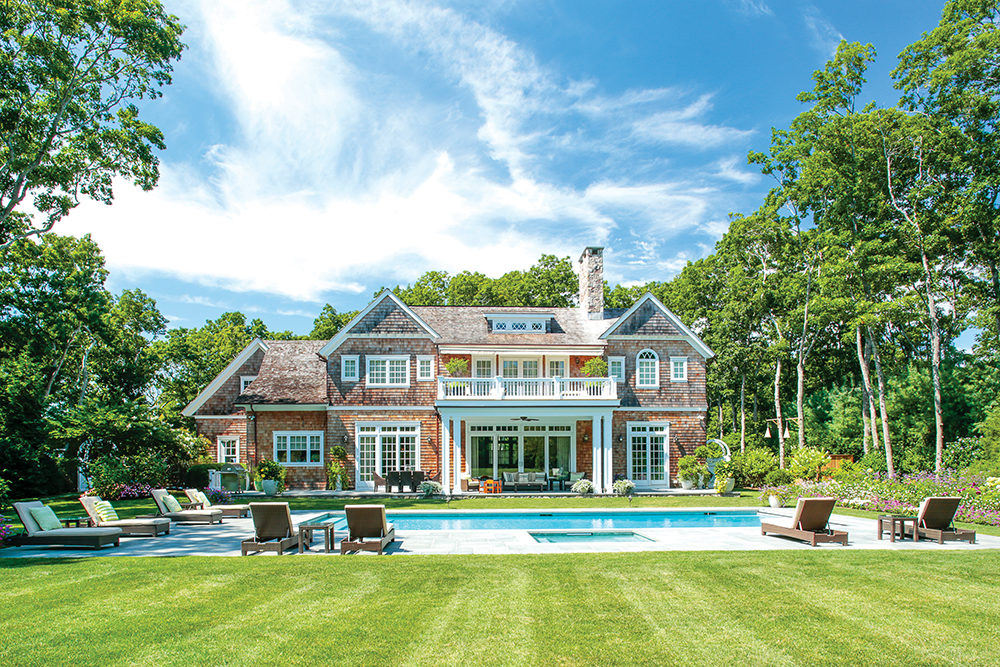

PHOTO BY ERIC STRIFFLER
A beautiful beach home in the Hamptons designed by Campion Platt offers its owners a seamless transition from inside to pool deck and garden.
SEAMLESS TRANSITIONS
A once clear delineation between interior and exterior spaces is being consistently eroded, says leading designer Campion Platt, and that’s a very good thing.
Platt, whose firm has offices in New York City, Palm Beach, Watermill, N.Y., and Los Angeles, says that this is a boon for new energy-saving home technology as well as design.
“With a move towards lighter, brighter interior spaces that incorporate green technology in the house as well as in the finishes,” he says, “the new interiors speak to a blend of simplified shapes, unfussy colors and lighter materials with more durability.”
That means, he adds, that coastal homeowners can transition seamlessly from a more formal interior setting to a thoroughly relaxed and inviting outdoor living experience. campionplatt.com
.jpg)
.jpg)
PHOTO BY Michael StAVARIDIS
Palm Beach, Florida landscape architect Keith Williams is designing gardens as “destinations.”
GARDENS AS DESTINATIONS
“There’s a strong focus today on creating spaces or outdoor rooms in gardens,” says Keith Williams, lead designer and partner at Nievera Williams Landscape Architecture in Palm Beach, Fla.
“The spaces aren’t just for functional purposes such as entertaining, dining or lounging around,” he adds, “but also to create destinations in gardens, which in turn lends the feeling of depth of space, especially in more compact sites.”
Williams says sustainable and low-maintenance gardens are also moving into the limelight. “We’ve been incorporating everything from smart system irrigation clocks to synthetic turf, drought-tolerant plants, containerized gardens and pervious paving materials,” he says.
Utilizing some of these design elements can be more expensive than traditional elements, he adds, but in the long run, “You’ll save time and money when it comes to caring for your garden, now and in the future.” nieverawilliams.com
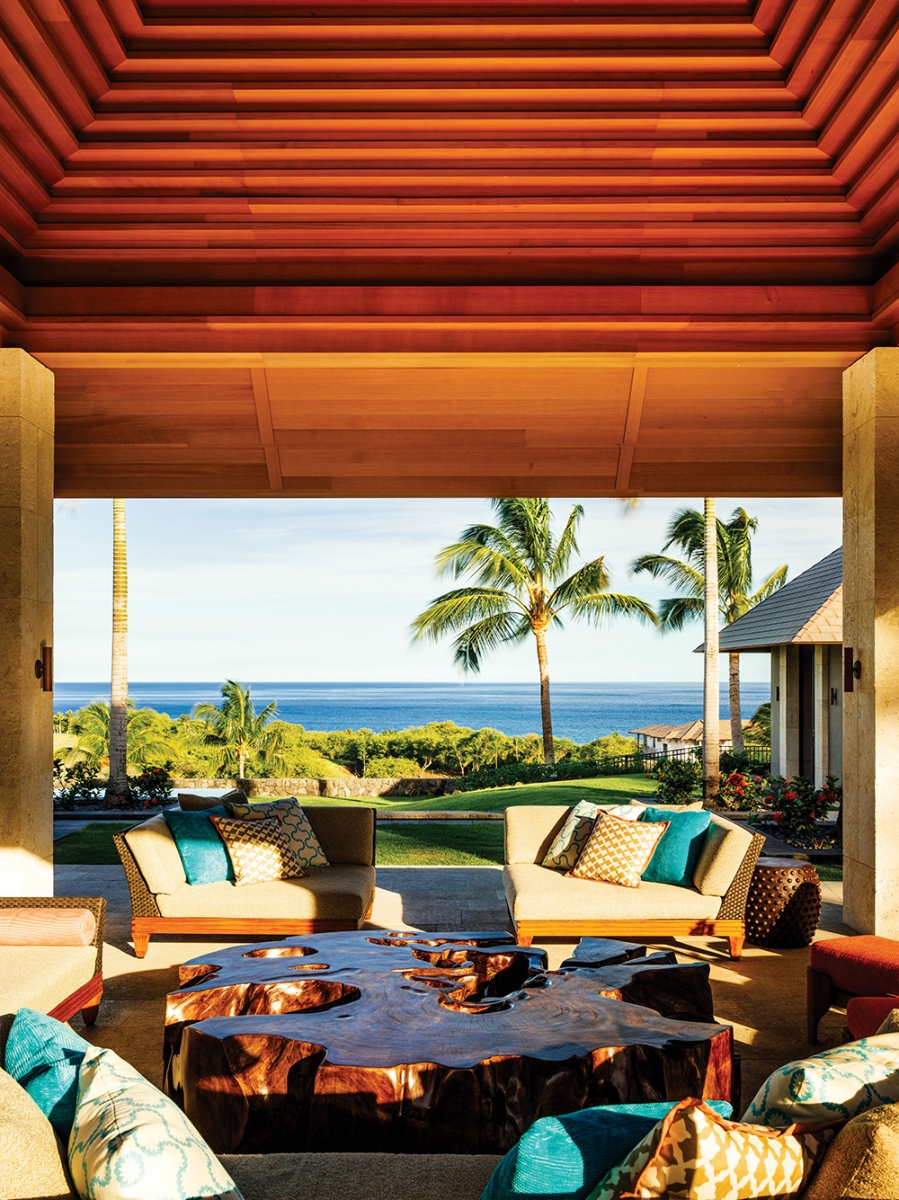

PHOTO BY Joe Fletcher
Hawaii’s de Reus Architects blurs the lines between inside and out at an oceanfront home on the Big Island.
AT ONE WITH NATURE
In tropical coastal regions, appreciation for nature is on the upswing, specifically when blended with timeless design.
Mark de Reus of Hawaii-based de Reus Architects is pleased to see increased interest in seamlessly integrating buildings and landscape as one concept instead of disparate ideas.
“Awareness is growing in the experiential direct benefits of living as close to nature as possible,” de Reus says.
For his clients, this means features such as well-shaded outdoor pavilions – cooled by breezes but protected from strong winds – and indoor/outdoor dining rooms next to reflecting pools surrounded by fragrant gardens.
“In essence, architecture deferring to nature instead of imposing itself,” he says. “It’s a sensual approach, a way to help us feel more connected and provide us with balance.” dereusarchitects.com
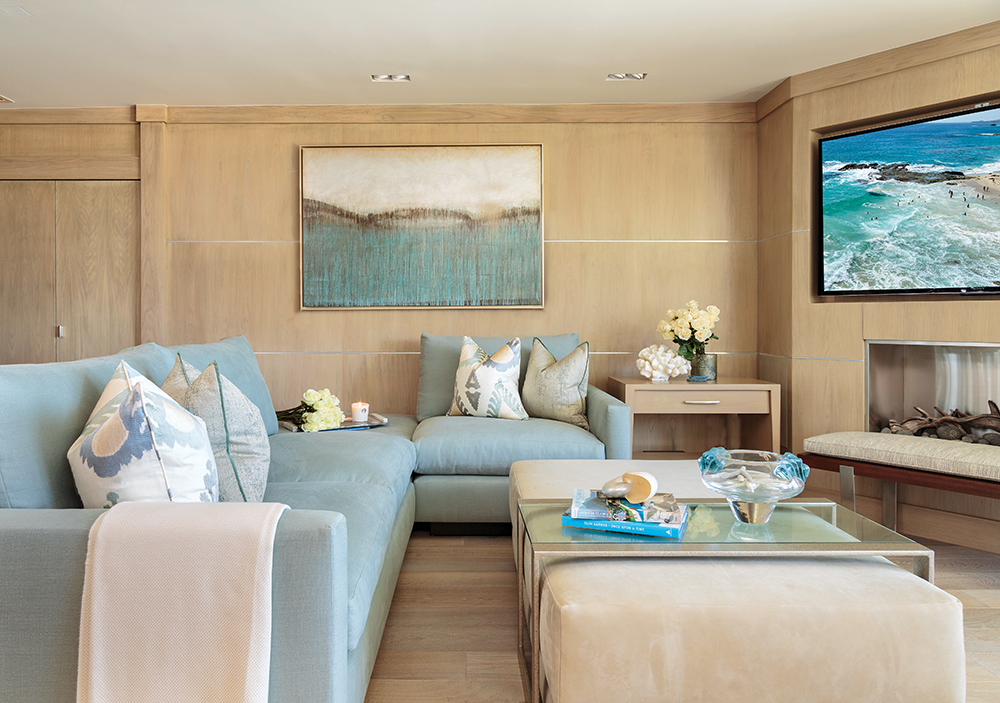

PHOTO BY Mark Lohman
Chic coastal home interior by Barclay Butera
COLORS OF THE COAST
Blending comfort and glamour is not an impossible dream, insists Barclay Butera, principal of renowned Los Angeles design firm Barclay Butera Interiors. “Clean, unfettered styling, with just an occasional nod to nautical, is glamorous yet comfortable,” he says.
For 2017, Butera sees a shift from bold colors and patterns to soft, natural beach hues and textures, as exemplified by the rooms featured in his most recent book Modern Living.
“Organic colors from the beach – washy blue, soft sand, sage grass green and crisp white – always work,” he says, “especially in tandem with contrasting darker wood finishes.”
And, happily, togetherness is back in style. “Seating areas that are conducive to conversation instead of isolation are in demand,” Butera says. “People lead such busy lives; they want a serene respite at the end of the day to relax with family and friends.” barclaybutera.com
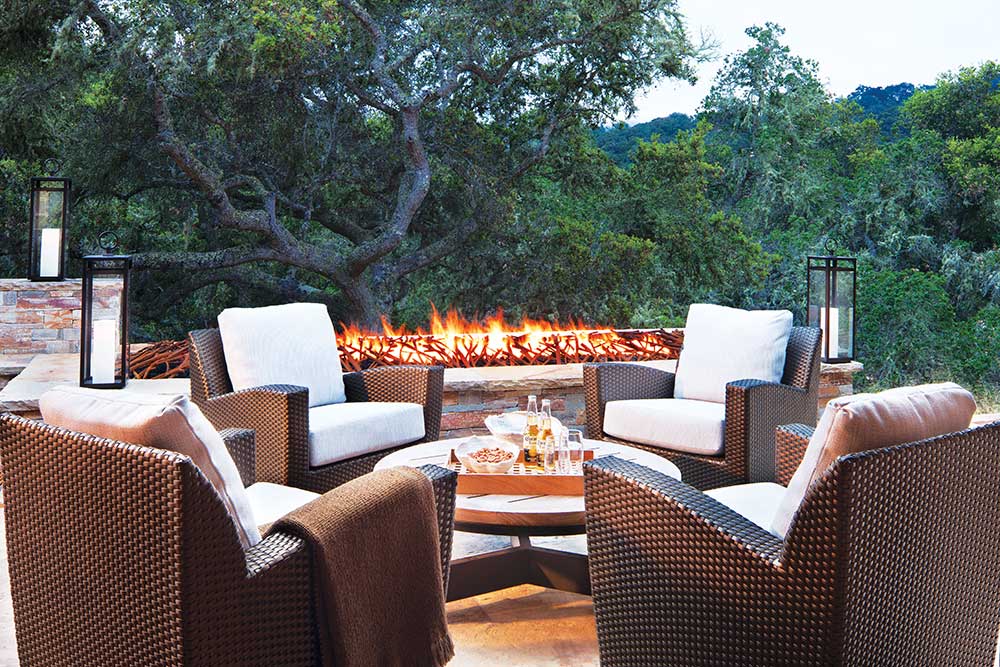

PHOTO BY David O. Marlow
An elegant fire pit creates a warm and welcoming outdoor living space by Hart Howerton
?
THE PATH TO WELLBEING
Anne Howerton, principal of Hart Howerton in New York City and San Francisco, believes that exceptional landscape design can shape the quality of the human experience.
For 2017, Howerton says, this means environments that contribute to health and mental wellbeing by promoting physical activity and social interaction.
“We’re designing outdoor rooms as settings for celebrations, weddings and parties as well as quiet, reflective spaces for spiritual renewal,” she adds.
Instead of corridors, the firm’s designers are finding ways to move guests through a sequence of gardens and colonnades.
Residential clients, she adds, want places that pull their families and friends together, with fluid indoor/outdoor spaces and amenities such as fire pits, outdoor dining settings and bocce. harthowerton.com
.jpg)
.jpg)
PHOTO BY William Waldron
Cullman & Kravis believes beach homes are moving from traditional interiors to a more modern asthetic.
DOWN TO THE LAST DETAIL
Top interior designer Ellie Cullman, principal of Cullman & Kravis in New York City, says her clients’ homes are shifting from traditional beach interiors to a more modern approach.
“Clients are moving away from upholstery with blousy, white slipcovers towards streamlined and structural furniture forms with textured fabrics,” Cullman says.
“While the architectural shell of a coastal home may employ classic materials such as shingles on the exterior and wood boarding on the interiors, the décor will clearly present a more contemporary vibe,” she adds.
Still, Cullman notes, details are never forgotten, as she demonstrated in the family room of a Hamptons summer house detailed with appliquéd curtain borders and geometric quilting. cullmankravis.com
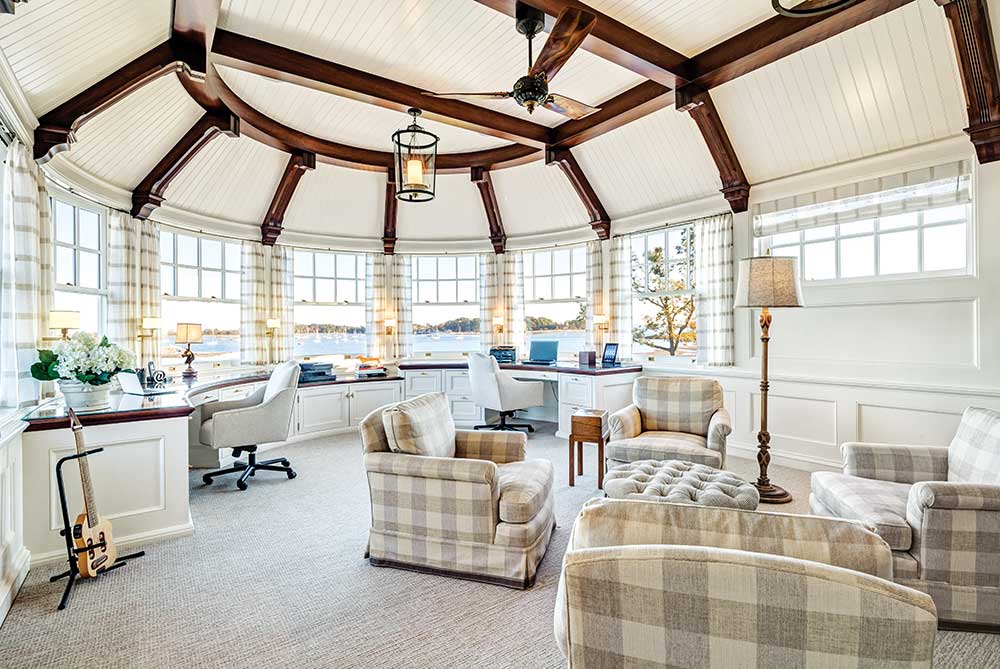

PHOTO BY WOODRUFF BROWn
Architect Charles Hilton says handsome beamed and paneled ceilings are making a comeback in classic oceanfront homes.
BEAMING WITH PRIDE
Charles Hilton, principal of Charles Hilton Architects in Greenwich, Conn., is seeing a strong interest in beamed and paneled ceilings for traditional coastal homes.
“Many of the historic, traditional-style homes had no finished plaster ceilings,” Hilton explains. “You looked right up at the structural beams and bottom side of the floorboard sub-floor above.”
In higher-style homes, Hilton says rough timbers were often dressed with traditional millwork.
“We are applying rough and finished beams as well as board ceiling in many of our current projects to capture historically based aesthetics, as well as using them as a device for scale and texture within these classic interiors,” he adds. hiltonarchitects.com


PHOTO courtesy of dharshini joseph
A Lynx outdoor kitchen envisioned by leading Cape Cod landscaper Dharshini Joseph
SEASONAL PLEASURES
Designing coastal home landscapes for multigenerational outdoor summer gatherings is a top focus for Dharshini Joseph, principal of Dharshini Joseph Landscape Architecture in Falmouth, Mass.
The Cape Cod designer says that 2017 is ringing in more clients who are investing in waterfront retreats. “Landscape features are designed to make outdoor activities convenient and attractive,” Joseph says.
She cites a list of seasonal pleasures: entertaining around an outdoor kitchen, swimming in an infinity-edge pool, jumping under an outdoor shower after a beach day, staying cool under a shady pergola and lounging around a fire pit at sunset.
Joseph employs beautiful color and recommends flowering shrubs, such as hydrangeas and roses, for a reliable summer garden palette that, as she says, “highlights spectacular water views and sunsets.” dharshinijoseph.com
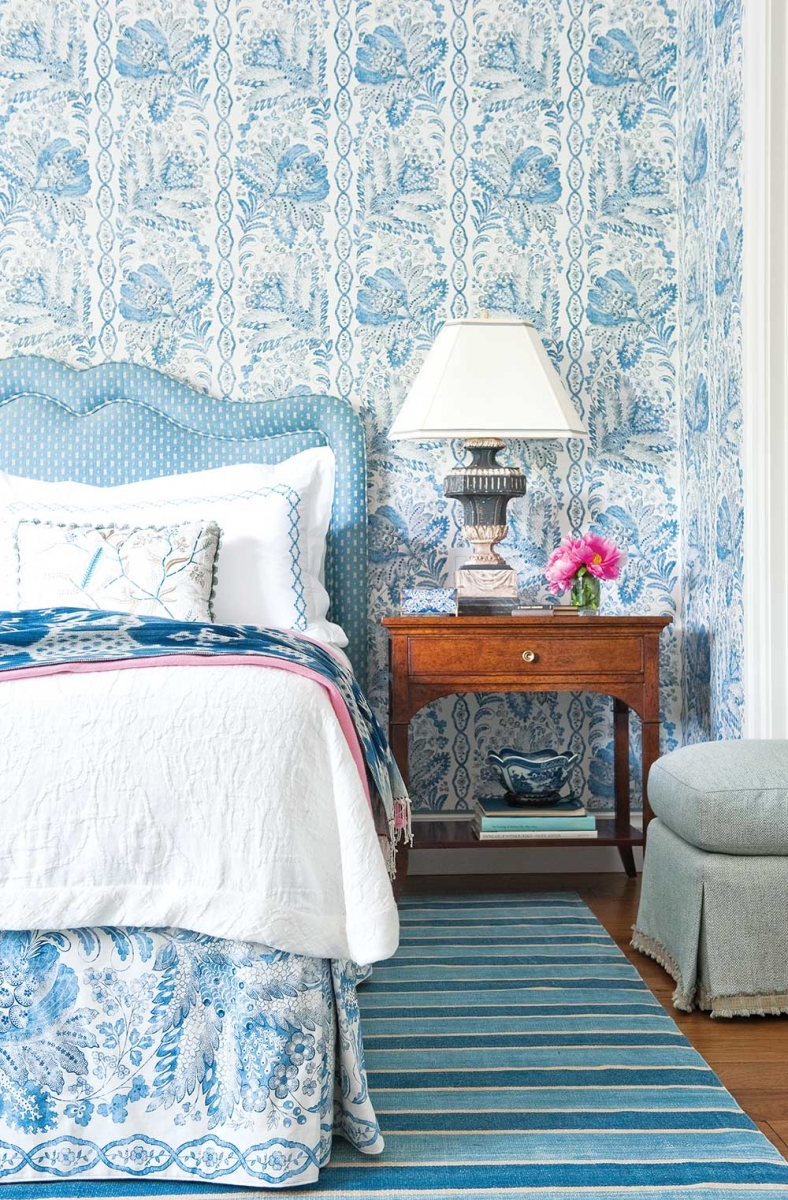

PHOTO COURTESY OF Tucker & Marks
Gorgeous interiors are the hallmark of Suzanne Tucker of Tucker & Marks in San Francisco.
GETTING THE MIX RIGHT
The coastal lifestyle and look for 2017 involves a sophisticated blend of textures, fibers, patterns and color, says Suzanne Tucker, a principal of leading San Francisco design firm Tucker & Marks.
“Whether I use contemporary or antique pieces, vintage textiles with handwoven ikats, classic patterns with rustic stripes or plain textiles with elegant embroideries – it’s all about the mix,” Tucker says.
She notes that trends are moving away from the safety of neutrals for more vibrant hues and intricate patterns along with the stylistic marriage of modern and traditional.
“A play of textures, a blend of patterns, a mix of old with new, a dash of color and masses of natural light,” says Tucker, “are the perfect recipe for living by the coast.” tuckerandmarks.com
Image Credits: Photo by Joe Fletcher.


